Suomi KP/-31 Submachine Gun — Finland’s Konepistooli
December 5th, 2023
11 minute read
The Suomi KP/-31 submachine gun proved to be a pivotal Finnish firearm that inspired the Soviet PPSh-41, the most extensively produced submachine gun in World War II. Featuring a high-capacity drum magazine, selective-fire system and a quick-change barrel, the Suomi submachine gun was quite innovative for its time. In today’s article, Peter Suciu examines the development of the Finnish Army’s submachine gun and describes its lasting legacy.
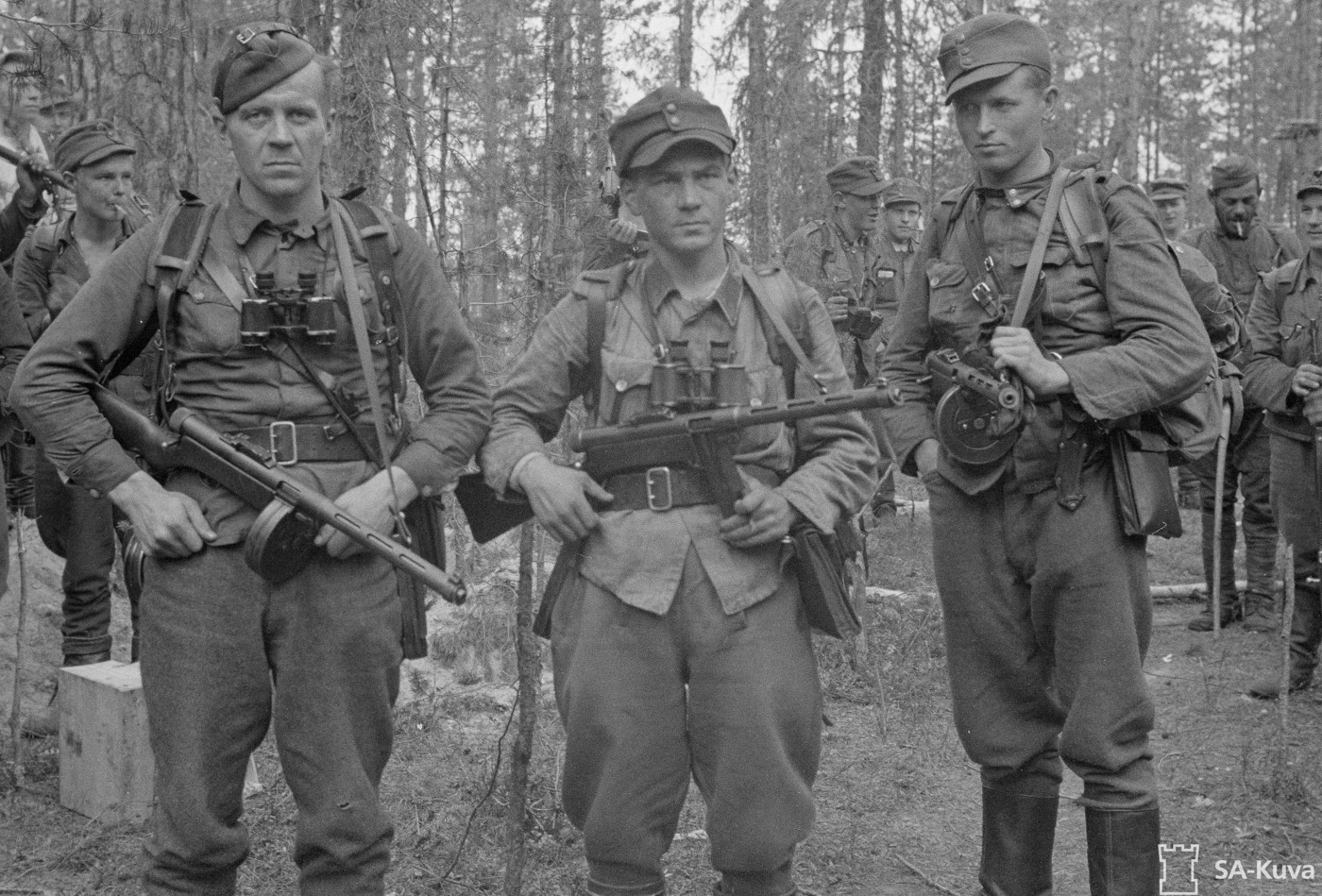
The Soviet Red Army’s Pistolét-pulemyót Shpágina-41, or “Shpagin’s machine-pistol-41” (PPSh-41) was the most-produced submachine gun of the Second World War, and even perhaps history, with about six million made in total. Though it is most well known for its service in use by the Red Army in World War II, it would go on to see service in countless wars — including in Korea and Vietnam.
It was often supplied to guerrilla forces that attempted to spread communism through force. [Ed. Note: Be sure to read our article Small Arms of the Viet Cong.]
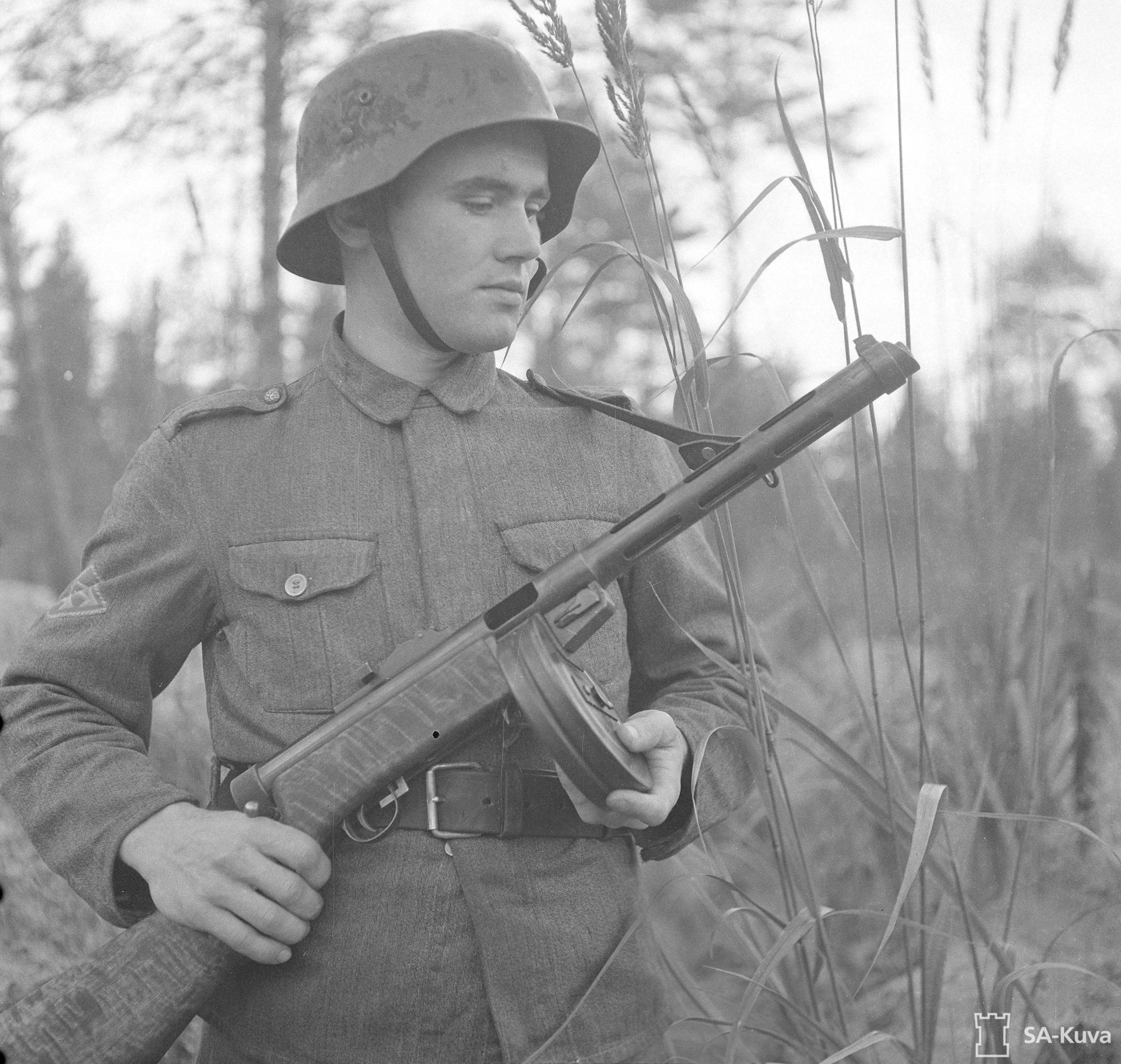
There are even reports that the weapon, chambered for the Soviet-designed 7.62x25mm Tokarev round, has seen limited use in the ongoing conflict in Ukraine. The Ukrainian Ministry of Defense had around 300,000 of the World War II-era weapons in storage and some have been pressed into service with second-line troops.
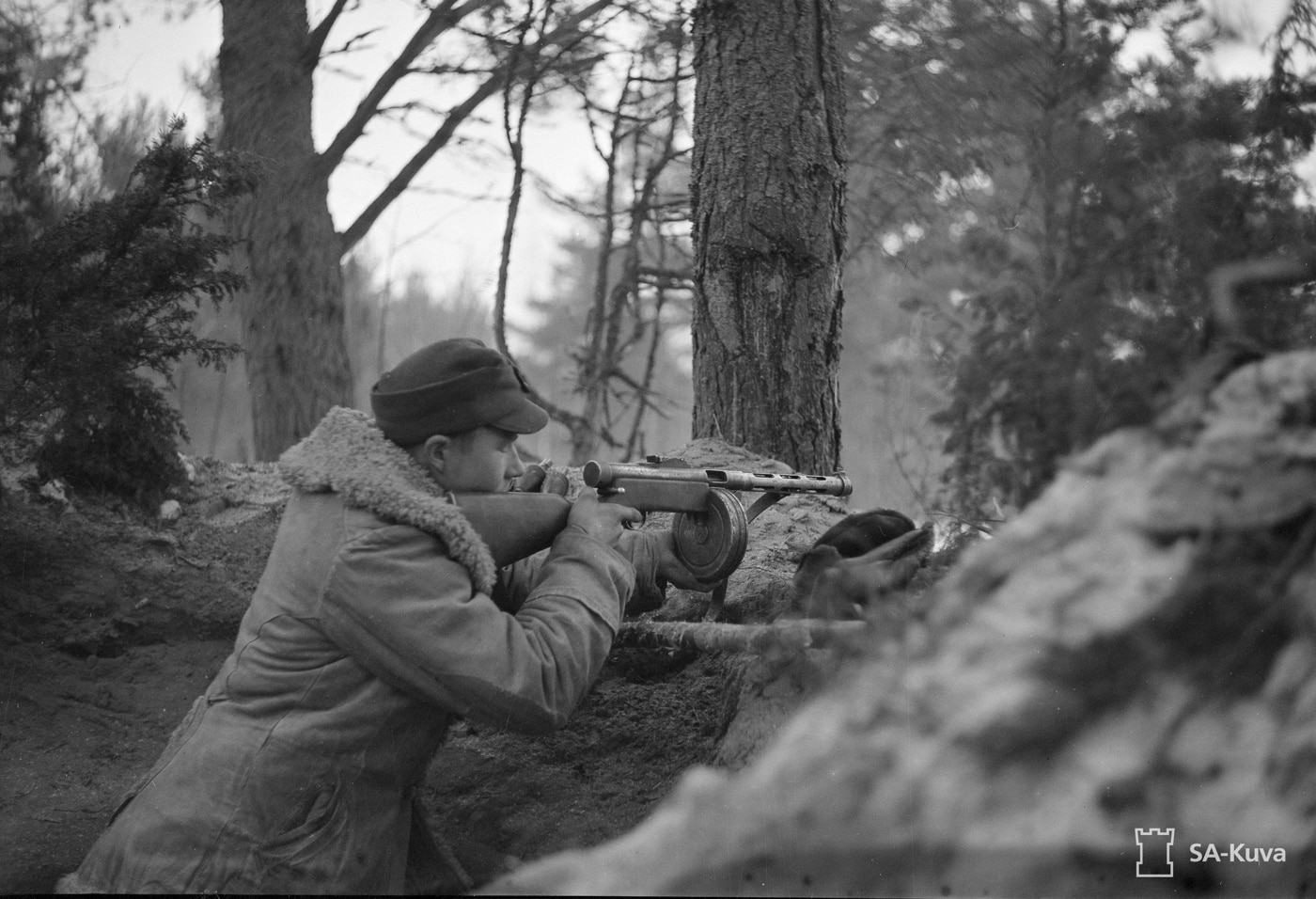
That fact comes with some irony as the PPSh-41’s design was influenced by an SMG employed by another nation that Moscow invaded in the hope of widening its sphere of influence.
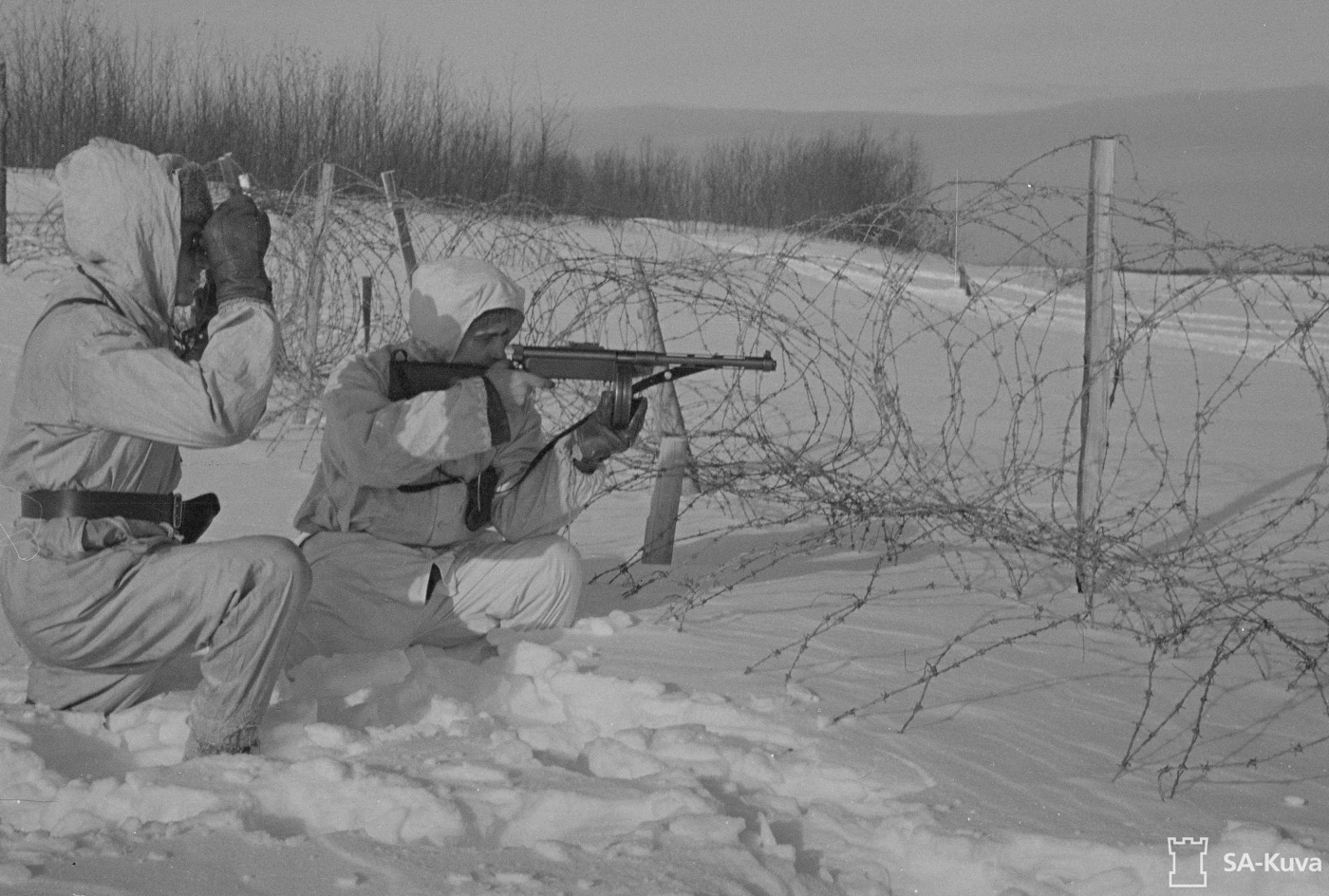
That firearm was the Suomi KP/-31 — sometimes listed as Model 1931 — a weapon that bears more than a passing resemblance to the firearm it would so greatly influence, notably the wooden stock and 71-round drum magazine. Though the PPSh-41 was noted for being a reliable weapon that earned the respect of those who carried it as well as those on the receiving end of it, the KP/-31 was also regarded by many as one of the most successful SMG designs of the Second World War.
Origins of an Iconic SMG
Finland, which had been ruled by Russia for more than a century, finally achieved independence at the end of the First World War. The February Revolution of 1917 brought down the centuries-old monarchy, followed by the October Revolution that resulted in Russia falling into civil war. This provided Finland with its opportunity for autonomy.
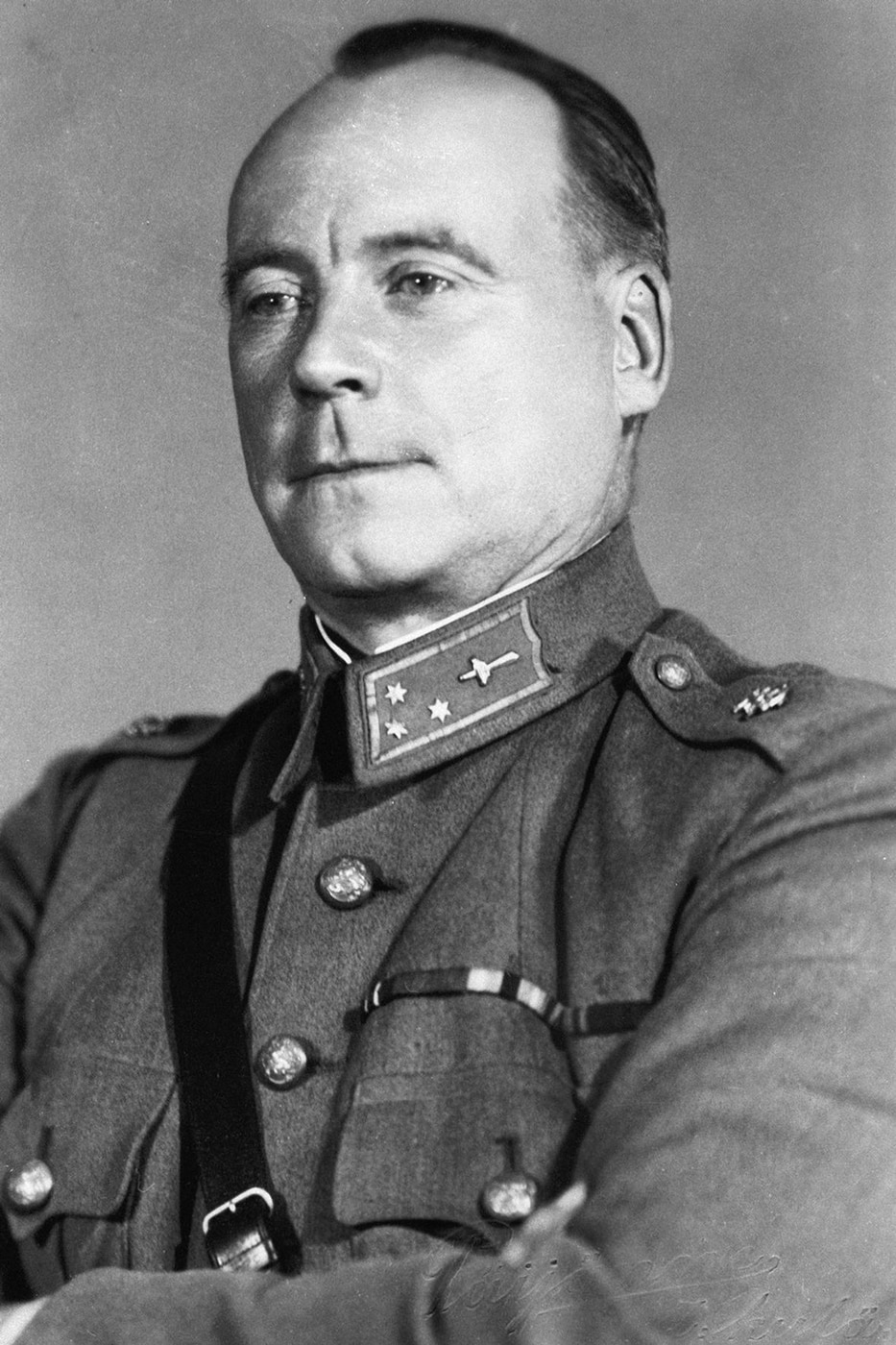
Determined to retain its independence, and with few in the way of allies, Finland began to develop a domestic arms industry. Leading the efforts was master armorer Aimo Lahti, who has been described as a “Finnish John Moses Browning.” He quickly began to design a new class of weapon, one that could provide infantry with sustained firepower in close combat situations.
Lahti was truly a visionary as the recently concluded First World War (then known as the “Great War”) had only seen the introduction of just a handful of SMGs — notably the German MP-18. Yet, he understood the promise it could bring in close-quarters combat.
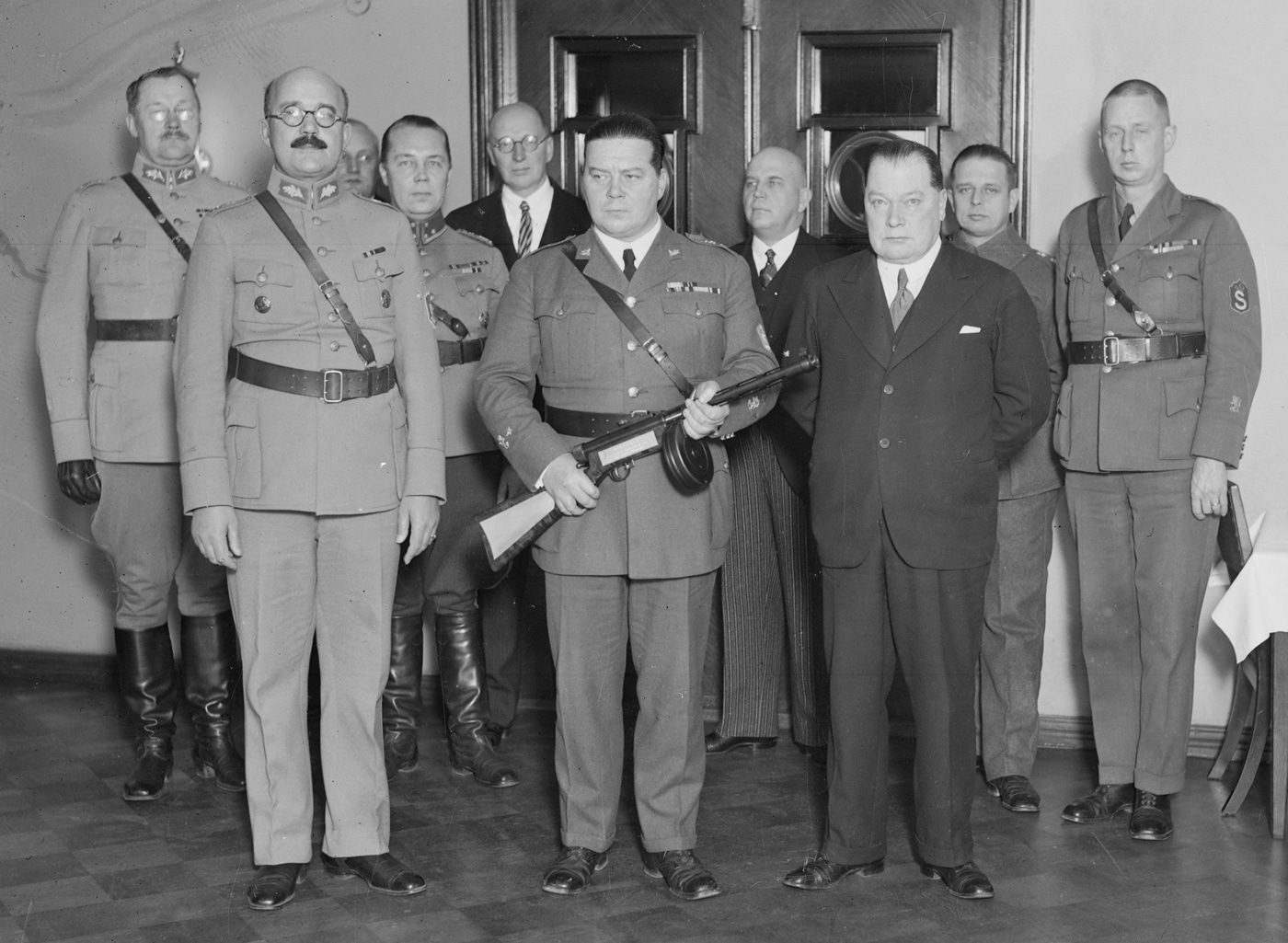
It is entirely possible that Lahti may have been able to study an MP-18, but it is just as likely that he was able to examine another weapon that had arrived too late for the major conflict in Europe. That was the Thompson SMG, as a small number were known to have been used in the Baltic State Wars that were fought from 1917 to the mid-1920s. This could explain why Lahti’s design incorporated selective fire — with both semi- and fully-automatic fire. That feature was present with the Thompson, but missing from the MP-18.
The M-22 and KP/-26 Submachine Guns
Lahti developed his first SMG in 1922, a firearm that was simply dubbed the Suomi, although firearms historians now describe it as the M-22. It should be noted that though Lahti was quite the prolific designer, he wasn’t much for names — as Suomi simply means “Finnish” in the Finnish language!
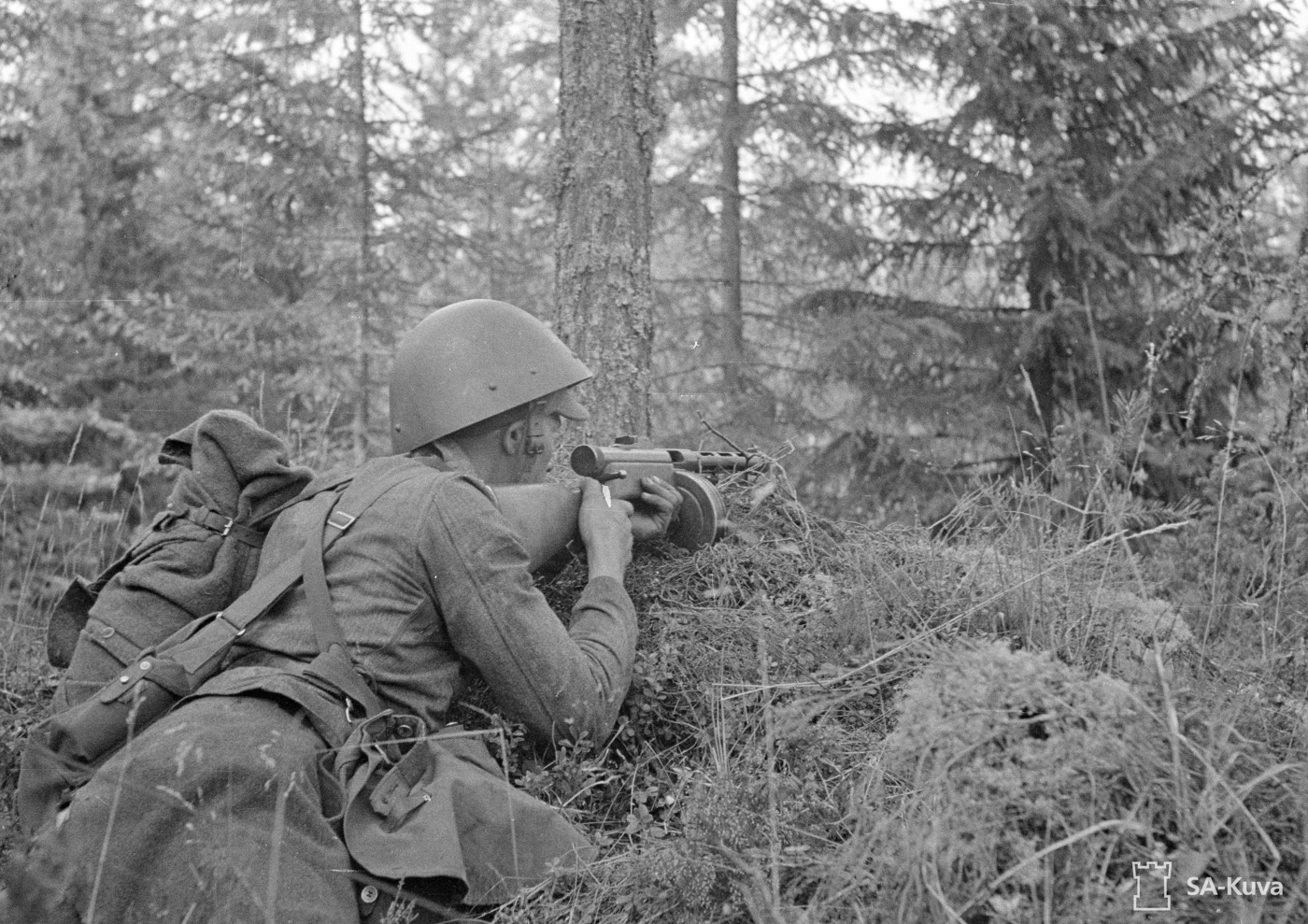
It isn’t known how many M-22s were produced, but it was arguably a prototype that led to the development of the KP/-26, which was produced at Lahti’s firm Konepistooli Oy. As with the M-22, the KP/-26 was produced in small numbers, but it was a far more refined weapon.
The KP/-26 was chambered for the unique 7.65mm Parabellum (7.65×21) cartridge due to the fact that it was the service pistol round of the Finnish Army. It was also equipped with a quick-change barrel and a recoil buffer that was designed to stop the rearward movement of the bolt by compressing air inside a chamber and — by altering the air escape port — could be adjusted to change the rate of fire.
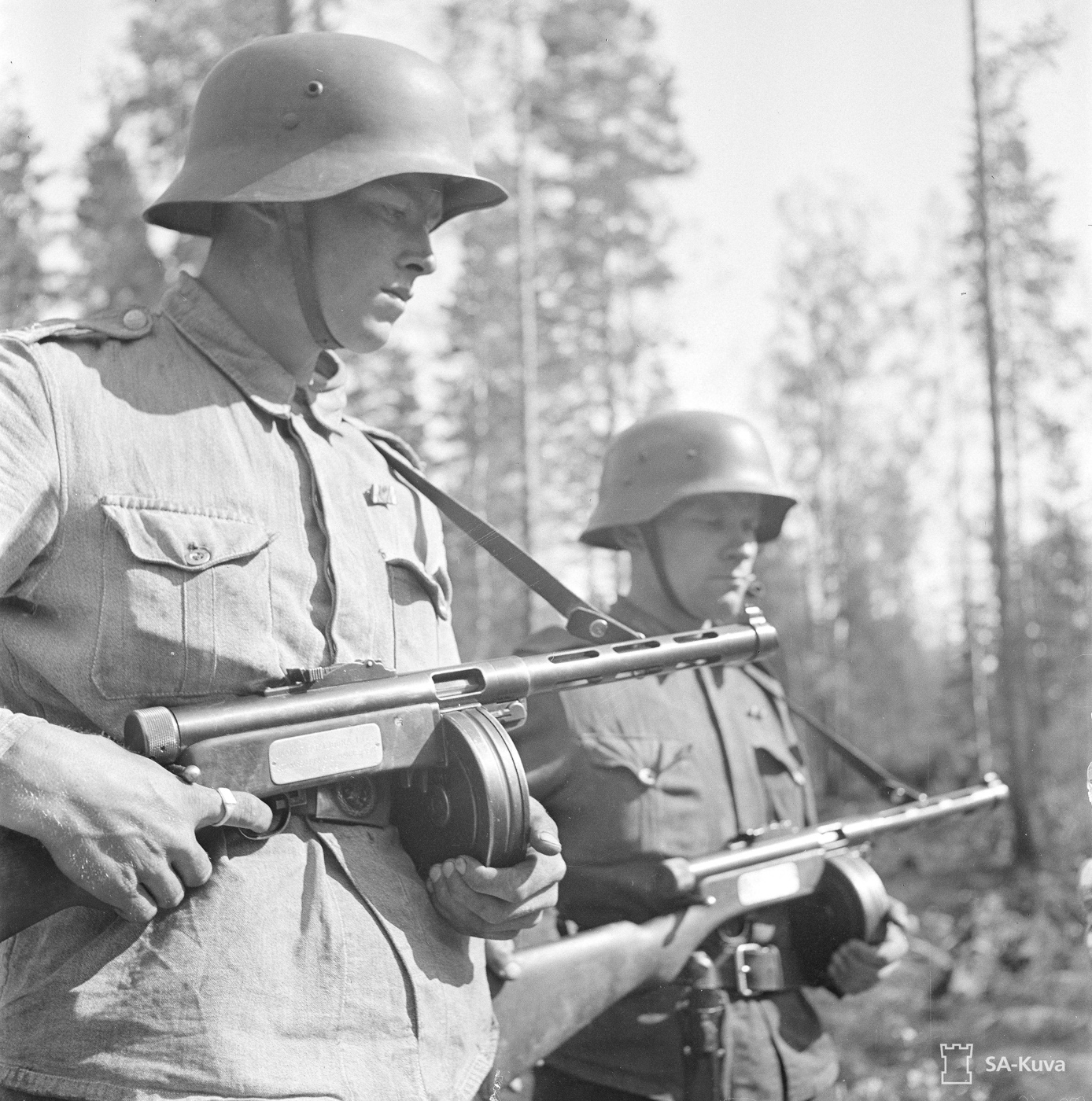
The KP/-26 also was fitted with a charging handle that ran beneath the bolt, which allowed a prone or stationary soldier to charge the weapon.
The KP/-31 Takes Shape
The Suomi KP/-26 was a fine weapon, but Lahti continued to improve his design. Along with assistance from Lieutenant Y. Koskinen, Lahti developed the KP/-31, which further refined the Finnish SMG.
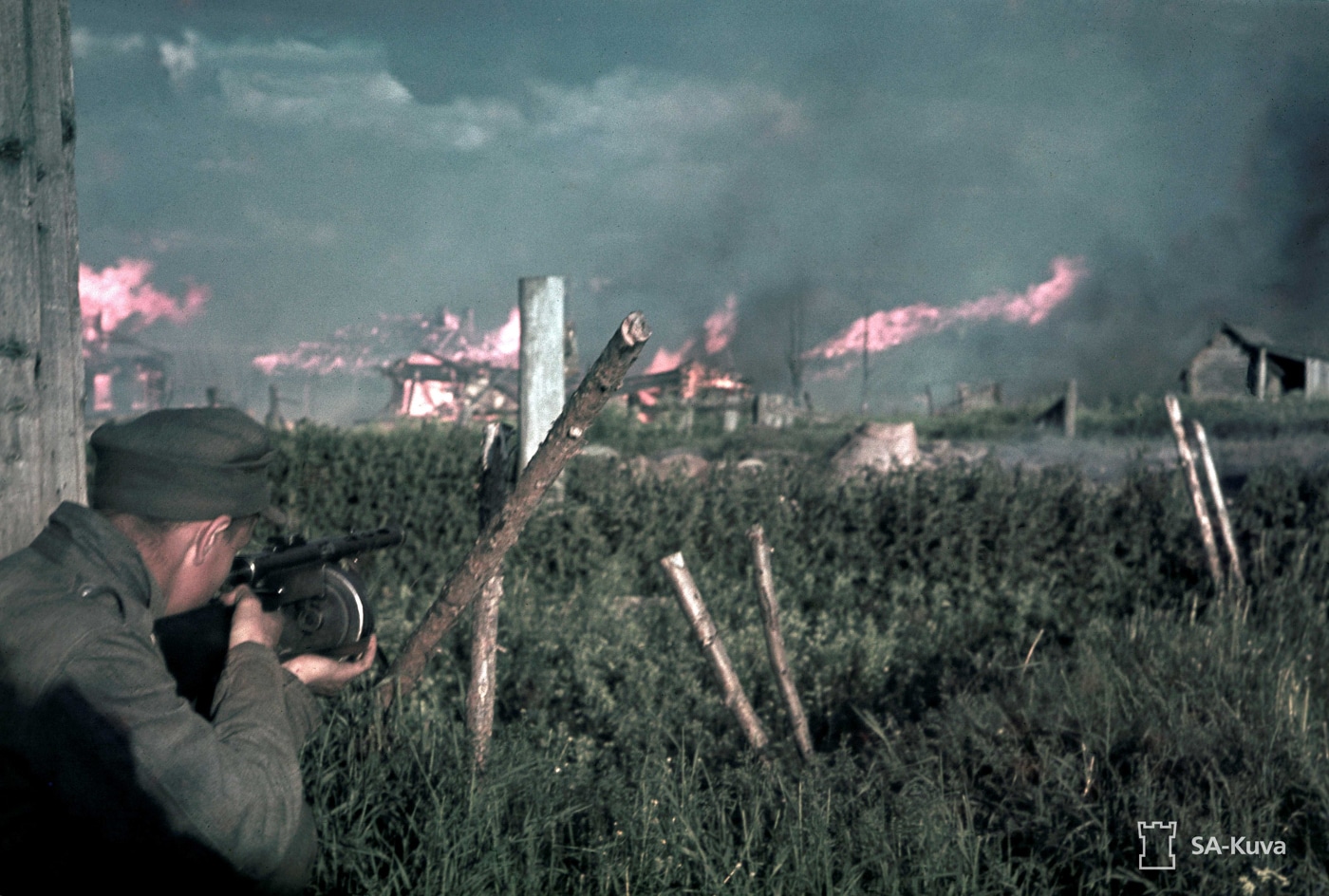
As with the KP/-26, it had a barrel inside a perforated cooling jacket/barrel shroud. Whereas the former weapon was fed from a curved magazine, the new design was fed from either a straight/stick box magazine or a drum magazine that could hold 71 rounds. It utilized a straight blowback action and also featured a quick-change barrel, which could allow for nearly unlimited sustained fire. It was an uncommon feature then and even now for an SMG.
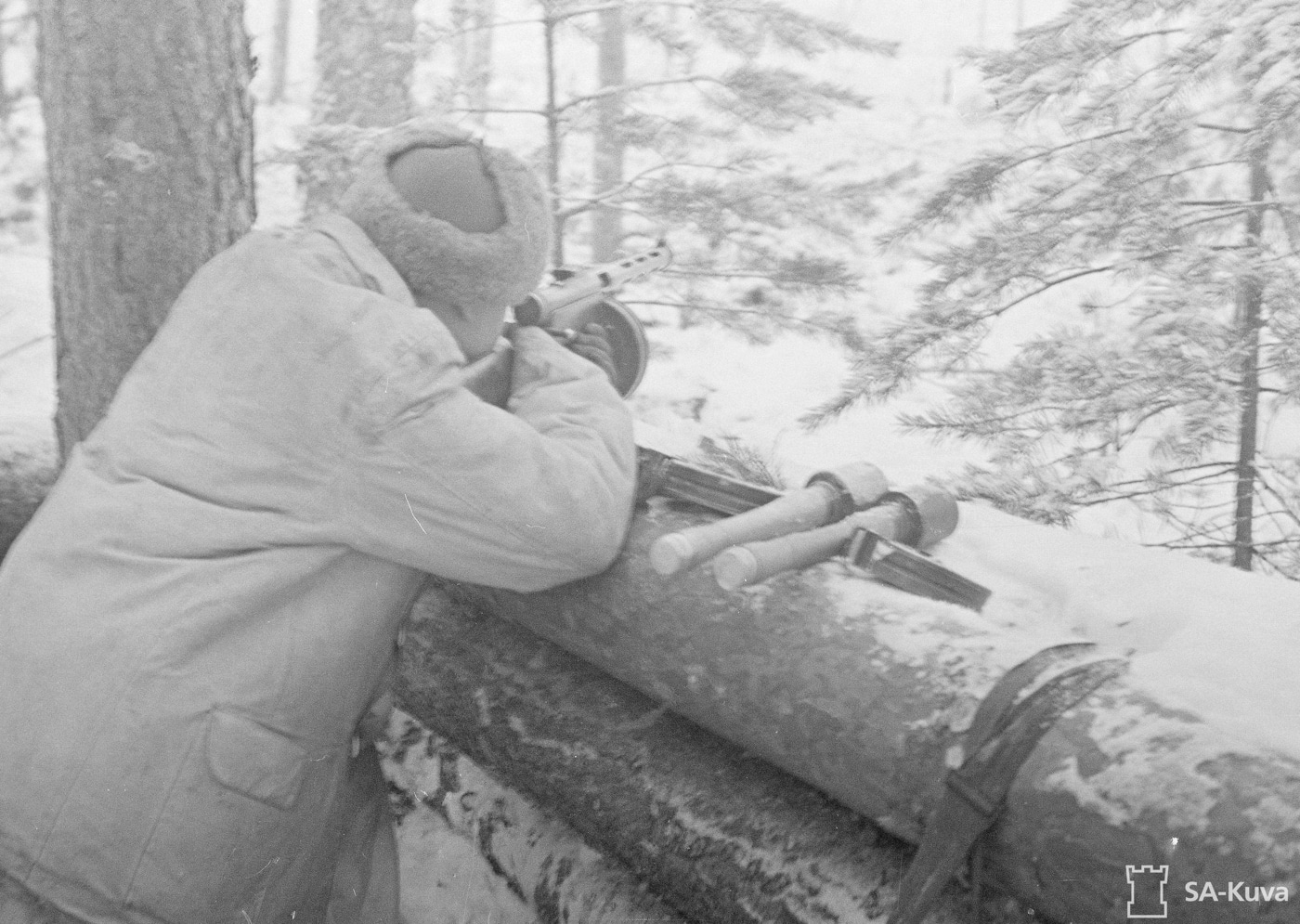
Notably, the KP/-31 was chambered for the 9x19mm Parabellum round that was developed for the P08 Luger pistol. This is the same cartridge used in the aforementioned MP-18 SMG. Arguably, it provided the SMG with a bit more stopping power. The KP/-31 had an effective range of 200 meters, and a rate of fire of up to 900 rounds per minute.
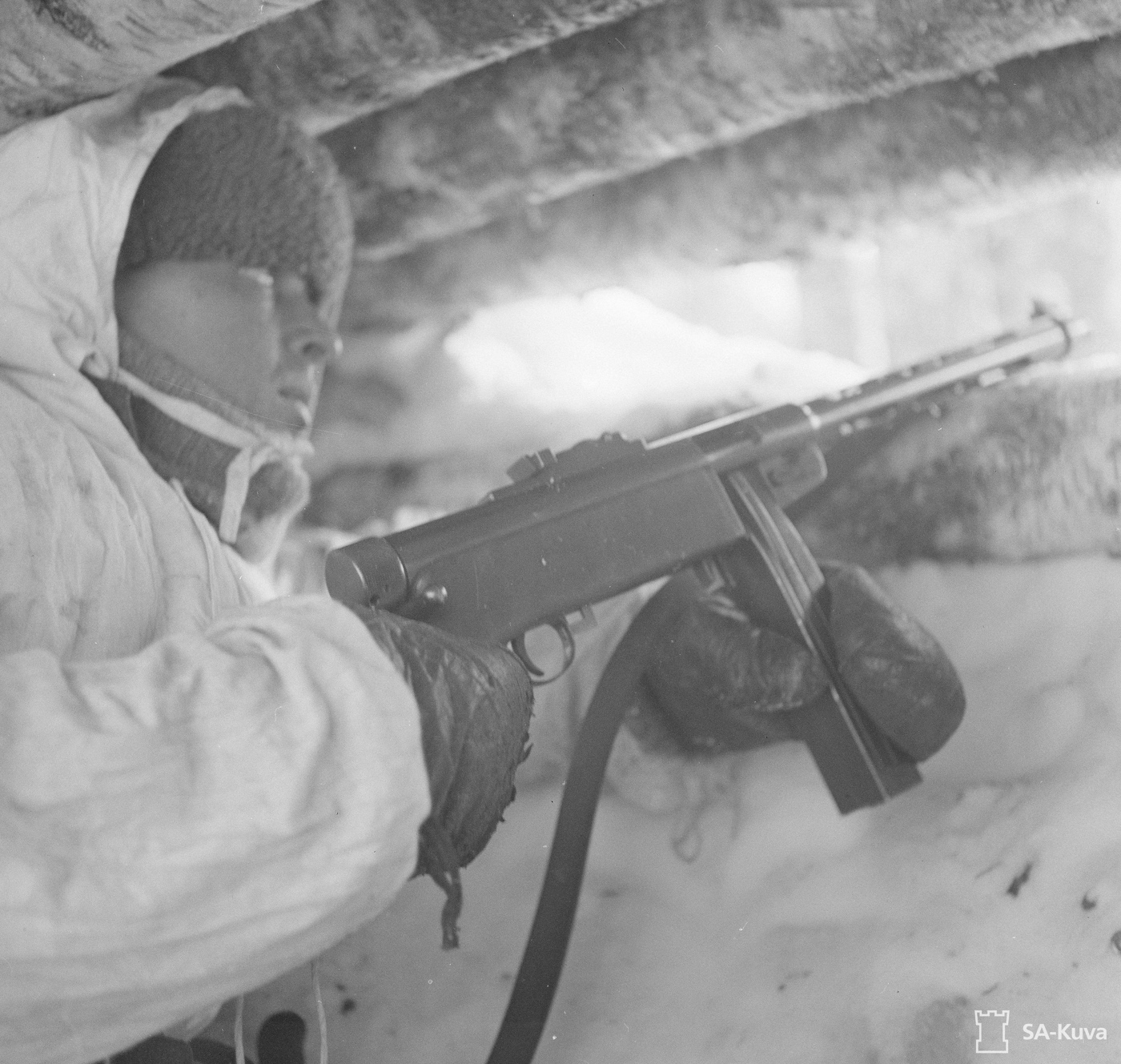
As the late Ian V. Hogg, noted firearms historian, described in his book “The Complete Machine-Gun — 1885 to the Present” (Phoebus Publishing Company, 1979), it was “an extremely well-made and reliable weapon which, for many years, was the standard by which other designs were judged. Somewhat heavier than most submachine guns, it compensated for this by being rather more accurate.”
Charged by pulling the handle straight back, a soldier could operate the KP/-31 like a carbine, using the right hand to change the magazine and charge the weapon while maintaining it at the ready with the left hand.
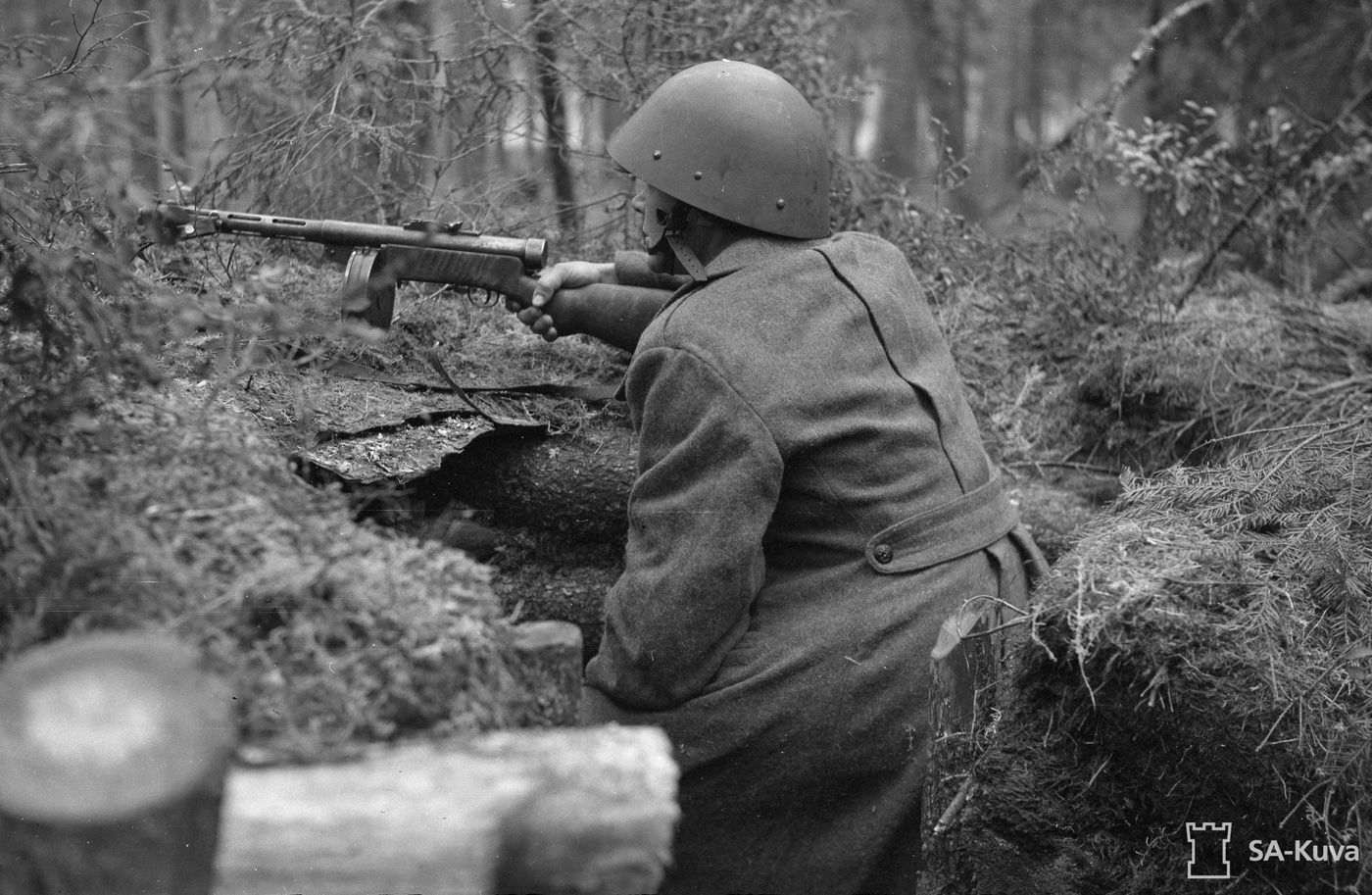
The Sumoi KP/-31 was upgraded towards the end of the Second World War with the addition of a muzzle brake that helped make it easier to control on fully automatic fire. KP/-31 submachine guns were manufactured by Tikkakoski Oy.
Taking Notice of the Suomi Model 1931
Though the KP/-31 was adopted by the Finnish military, it was actually first employed in combat with the forces of Bolivia and Paraguay during the Chaco War (1932-35), which was fought by the two South American rivals for control of the Gran Chaco region. That largely forgotten conflict actually served as a test bed for new military platforms from aircraft to small arms, even before the Spanish Civil War.
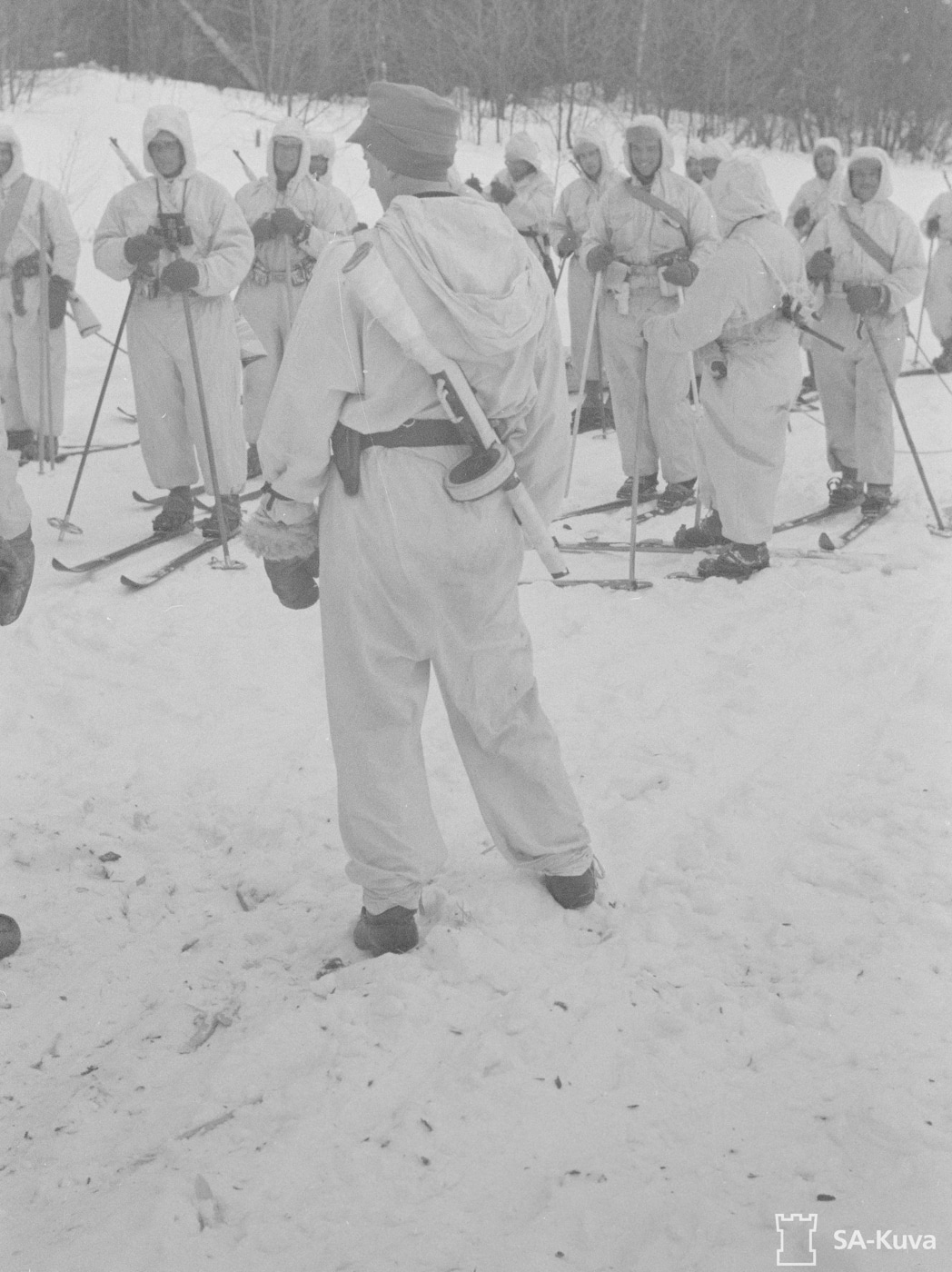
A number of the KP/-31s were supplied to Bolivia, which had adopted the German P08 pistol, and some of those were almost certainly captured by Paraguayan forces — although Paraguay bought arms from any nation that would sell them.
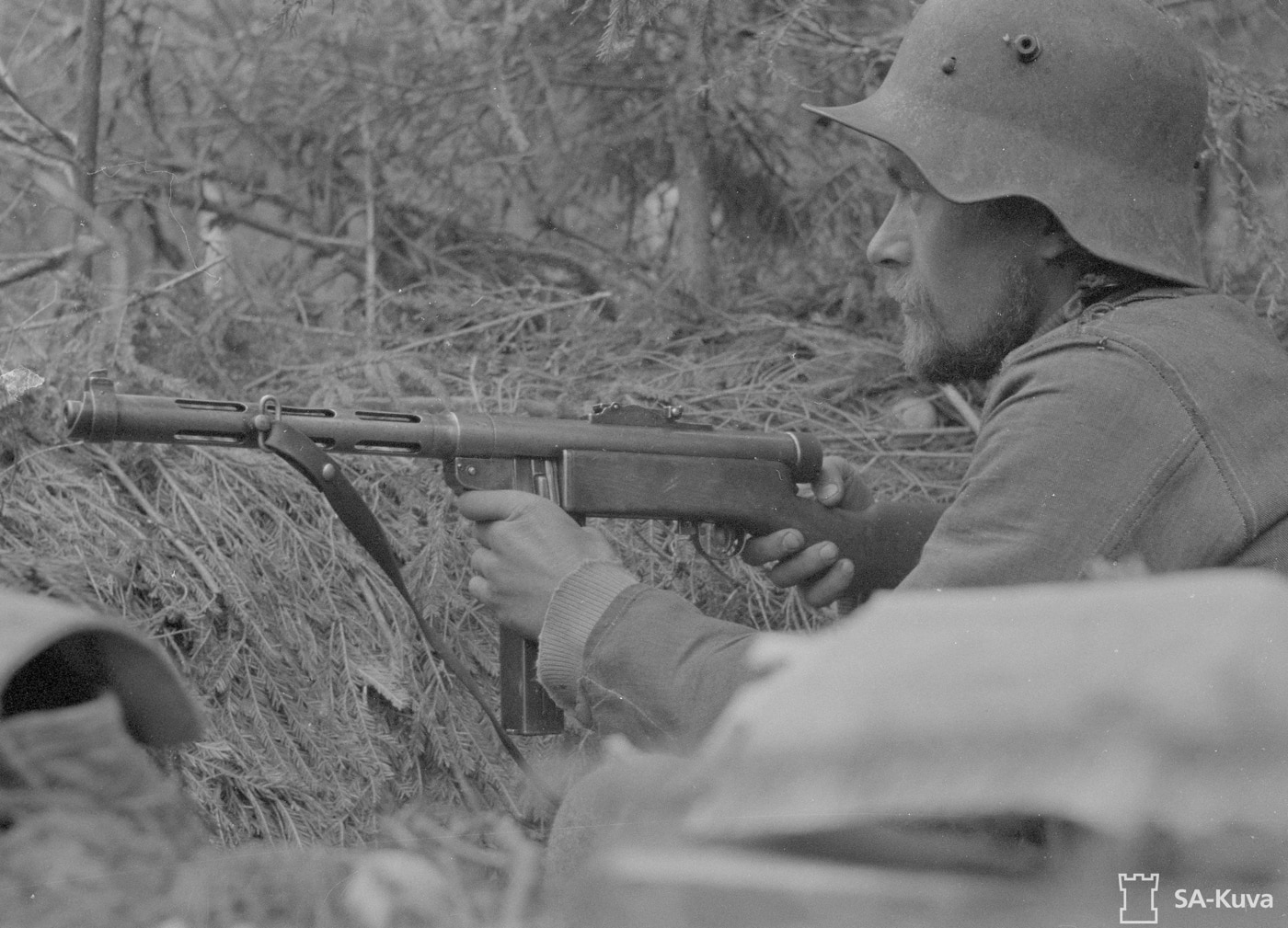
The Finnish SMG next saw use in Spain with both the Republican and Nationalist forces.
However, despite the fact that some Red Army “advisors” would have almost certainly seen and perhaps even handled the KP/-31 during the conflict in Spain, the weapon was used to devastating effect during the Winter War (1939-40) when the Soviet Union invaded Finland. The capabilities of the Suomi KP/-31 seemed to have taken the Red Army by surprise — as much as Finland’s tenacity and determination.
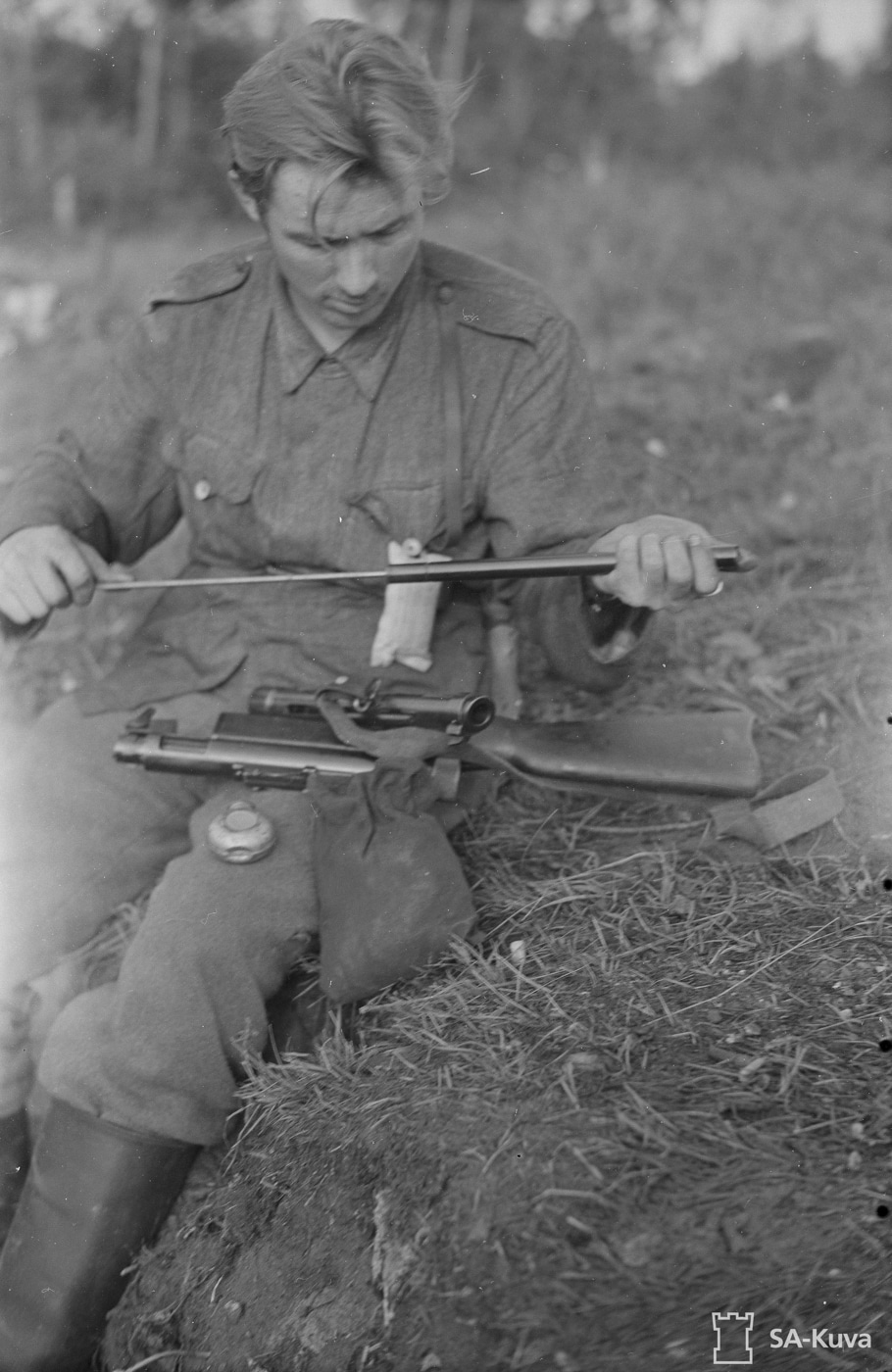
After seeing it in action, the weapon was noted to have a profound effect on Soviet authorities, who had been dismissive of SMGs. Almost immediately, the 71-round drum magazine was copied and adopted by the Soviets for the PPD-40, the forerunner of the PPSh-41.
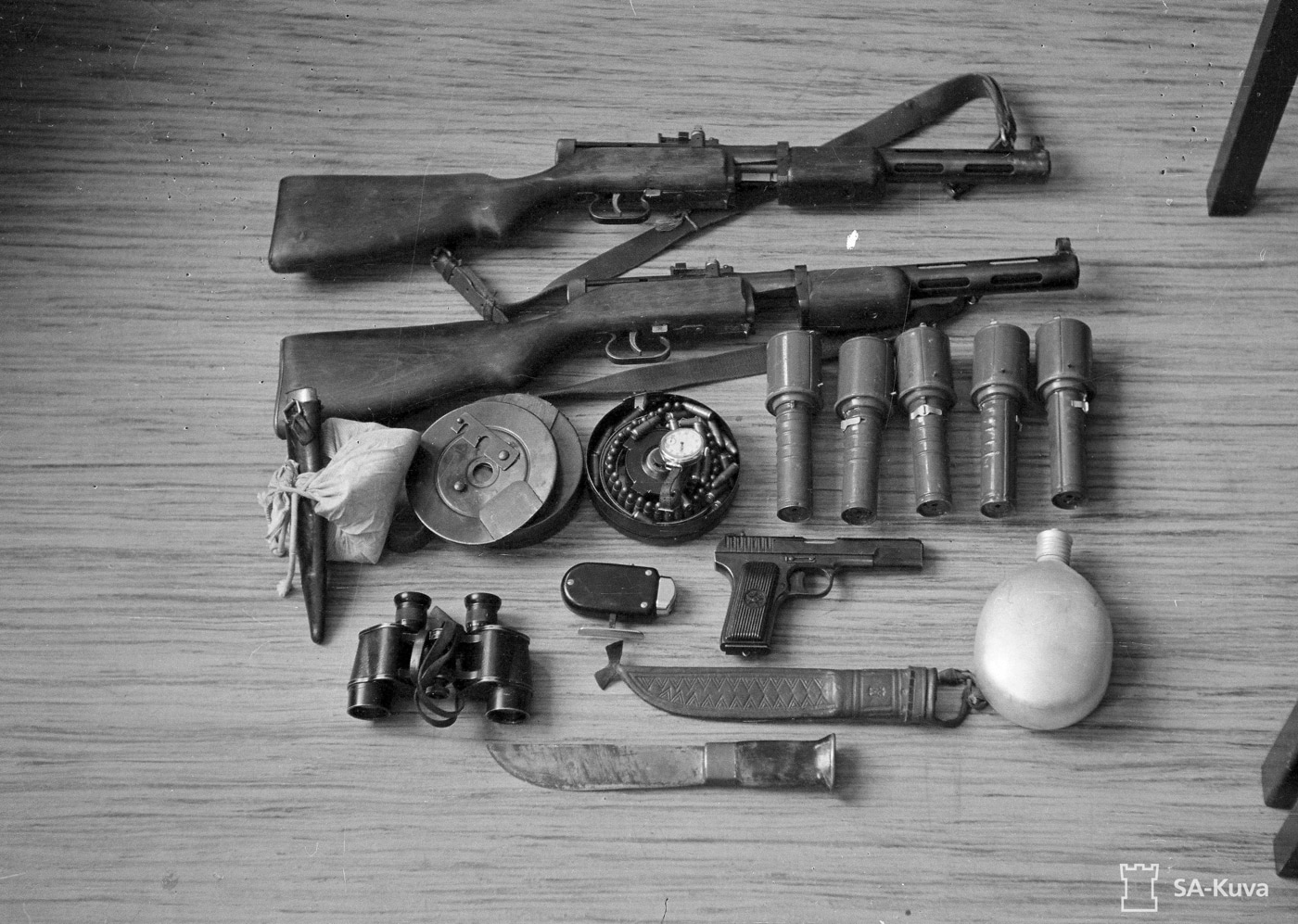
U.S. authorities, who made note of the problems that the Red Army encountered in fighting Finland during the Winter War and the Continuation War, praised the KP/-31. A 1942 U.S. War Department report released during the Second World War also called out the key attributes of the “Suomi machine carbine” as it was described.
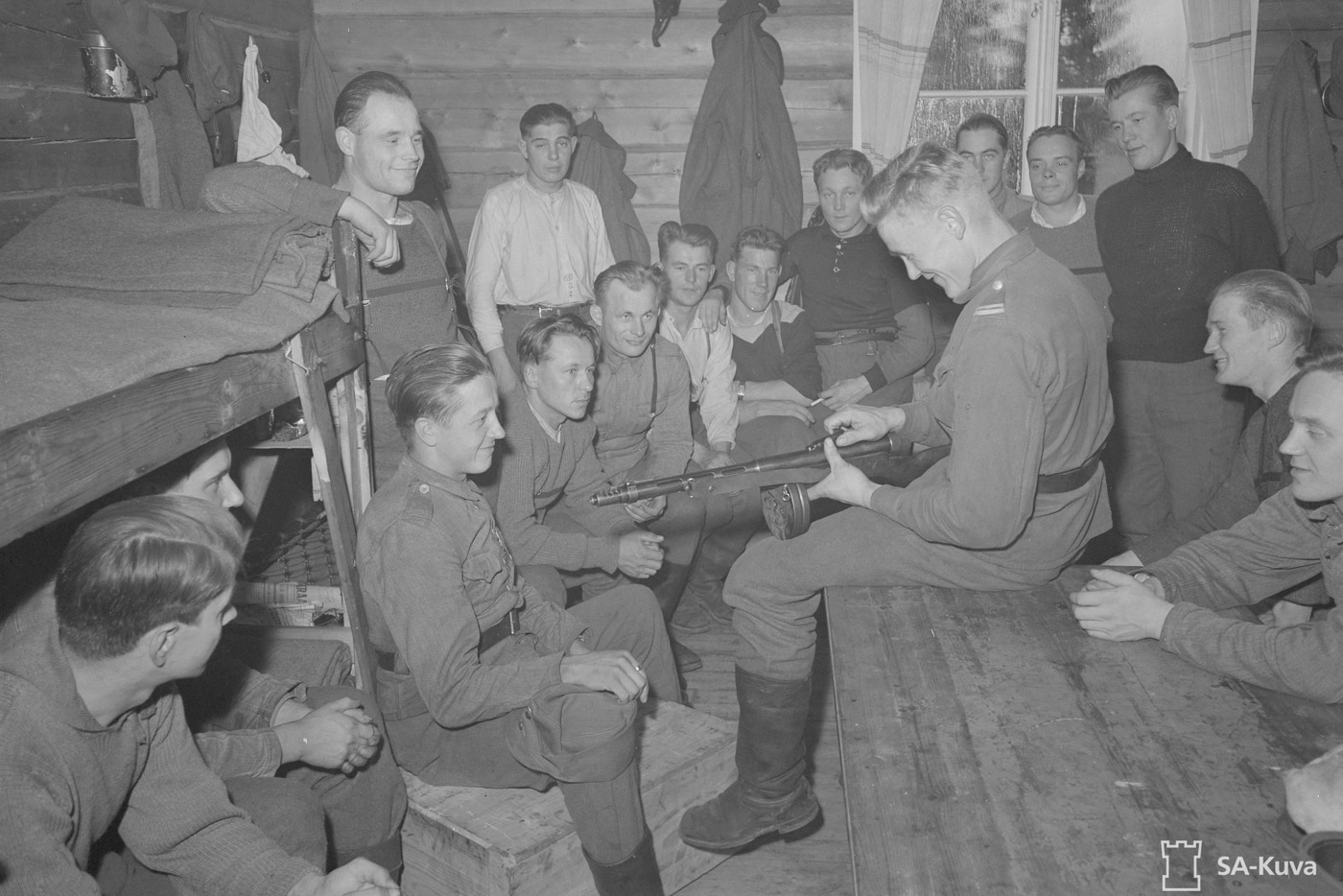
“Something entirely different is required for warfare in the Finnish woods. Here the weapons must be located far forward and maximum fire power attained immediately. This demands an automatic weapon which is light and mobile. This weapon must be unusually well-balanced to ensure good aim under difficulties incident to forest fighting. The Suomi carbine is the weapon which fulfills all these requirements.”
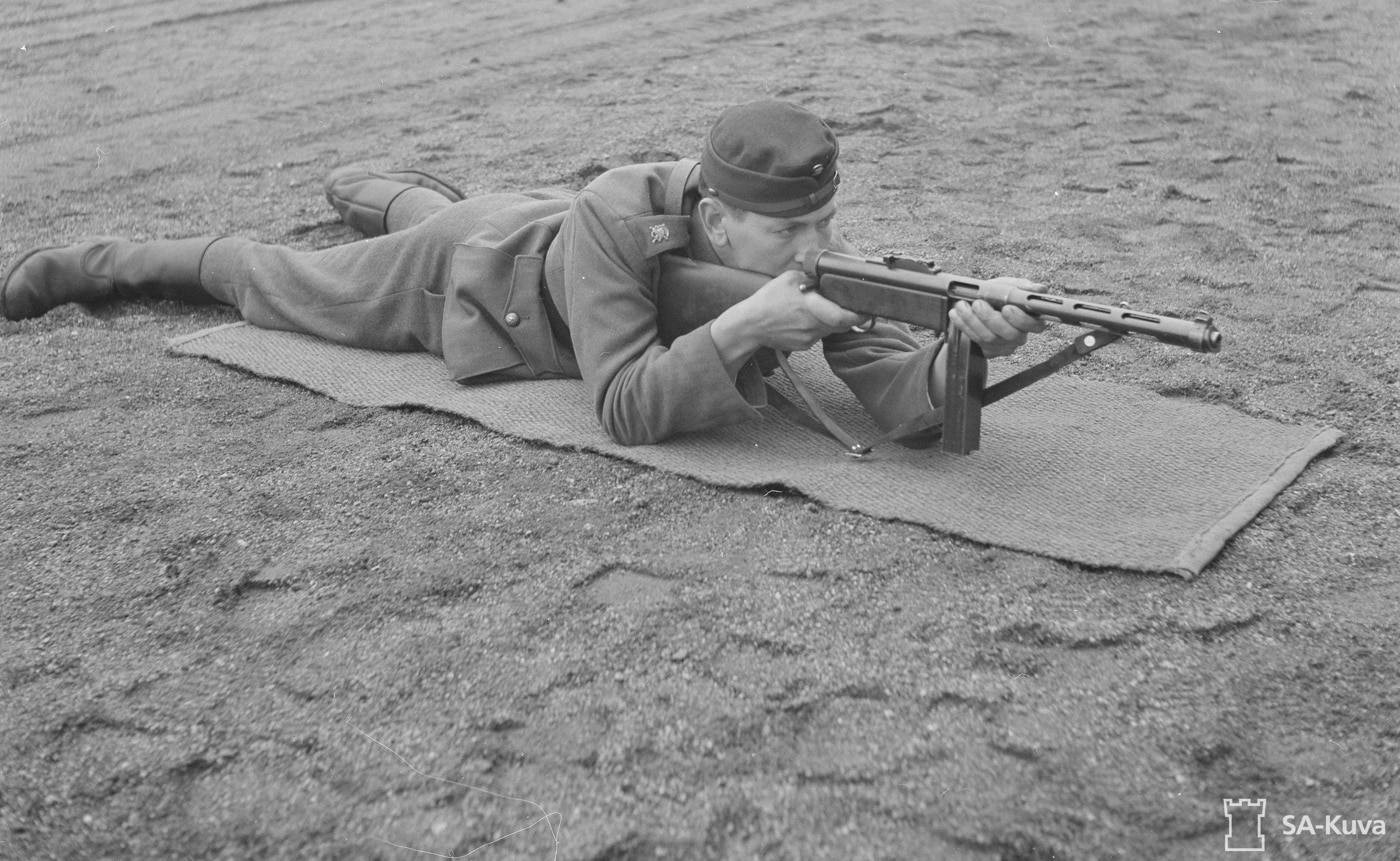
The Suomi KP/-31 saw use with the Finnish military against the Soviet Union in the Winter War and the Continuation War and the brief fight against Nazi Germany during the Lapland War, while it was also employed by the Israel Haganah in the 1948 Arab-Israeli War. Finland produced a number for evaluation by Estonia before the Baltic State was annexed by the Soviet Union in June 1940, while it also provided a number to its Bulgarian allies during the Second World War. German paramilitary and police forces used the Suomi KP/-31 in limited numbers.
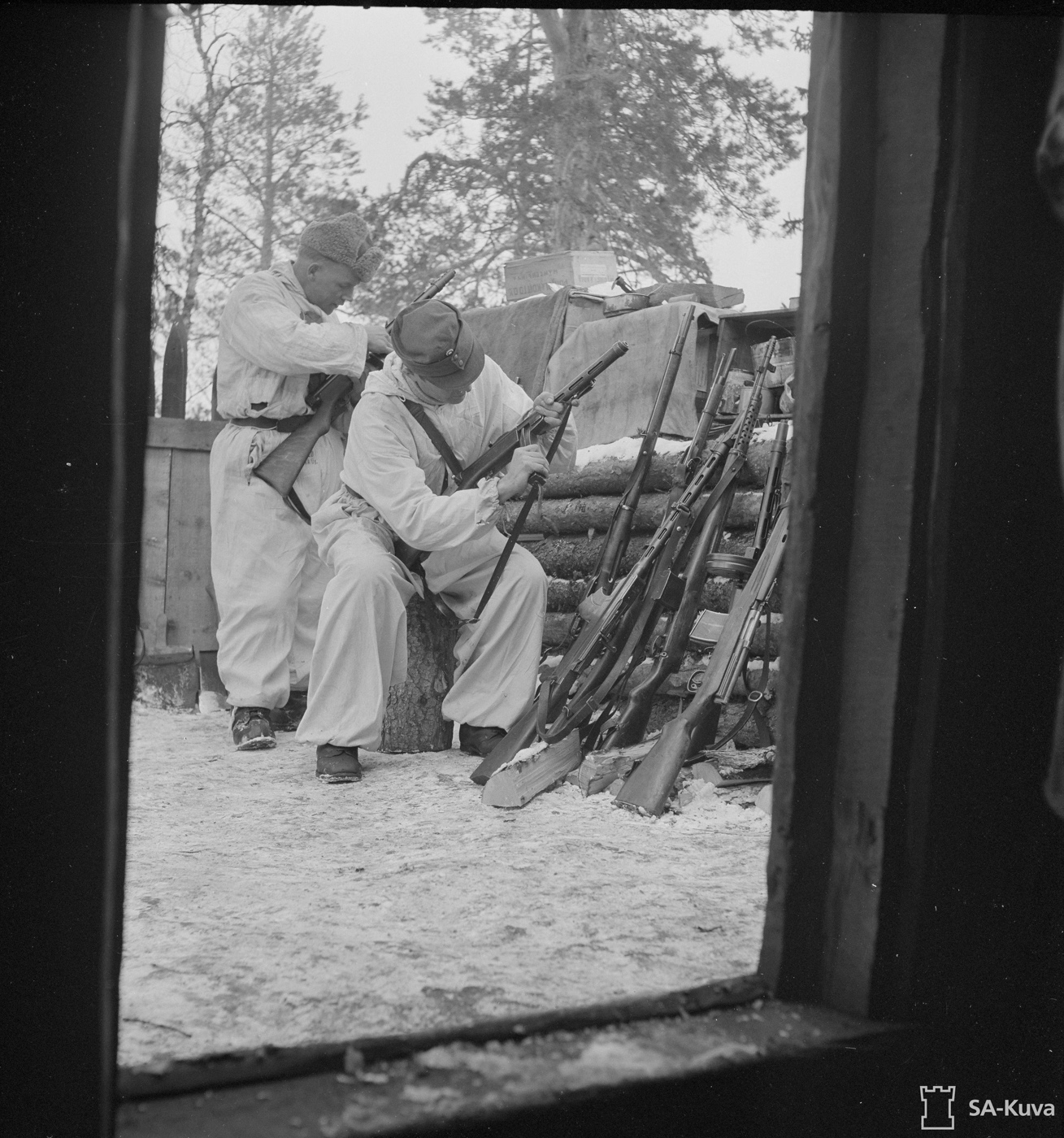
The Soviet Union further employed captured KP/-31s during the war, while a clone was produced in Leningrad as the Karelo-Finskii KF-42, chambered in the 7.62x24mm Tokarev pistol round used with the PPSh-41.
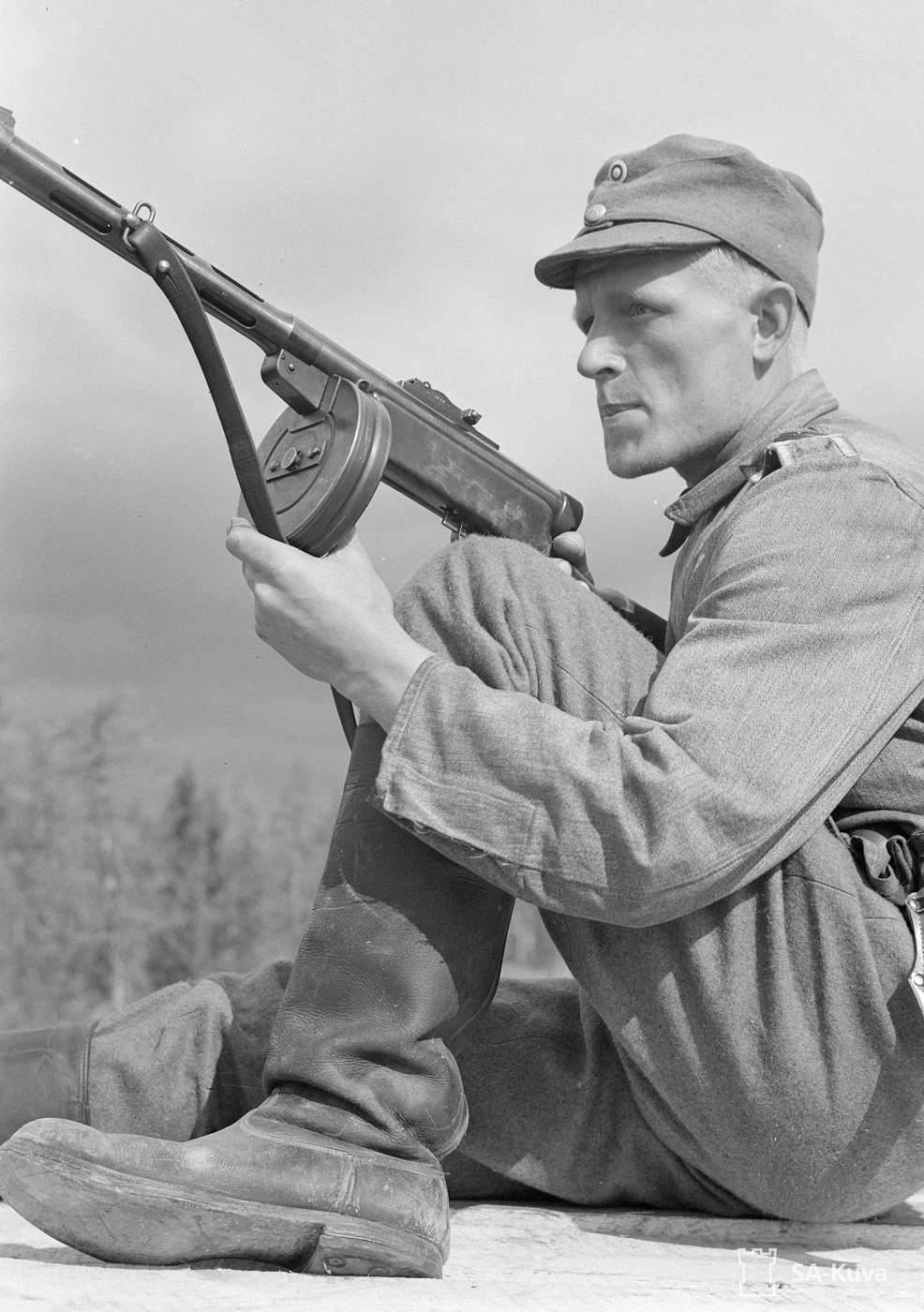
In an interesting twist, one of the most famous users of the KP/-31 was Simo Häyhä, aka the White Death, one of Finland’s most noted snipers. On a few occasions, he was assigned to an assault squad, during which time he may have killed 200 of the 500+ Red Army soldiers he is credited with.
In Popular Culture
The Finnish KP/-31 hasn’t exactly been among the most popular weapons in popular culture. In fact, it has only been seen in a handful of films, with most being made during the Second World War by the Soviet Union. Its “Hollywood” debut only came in the 1979 film Cuba where it is seen used by guerilla forces. However, it is likely that it was actually a stand-in for the PPSh-41 as there is little evidence that any KP/-31s were used in the Cuban Revolution.
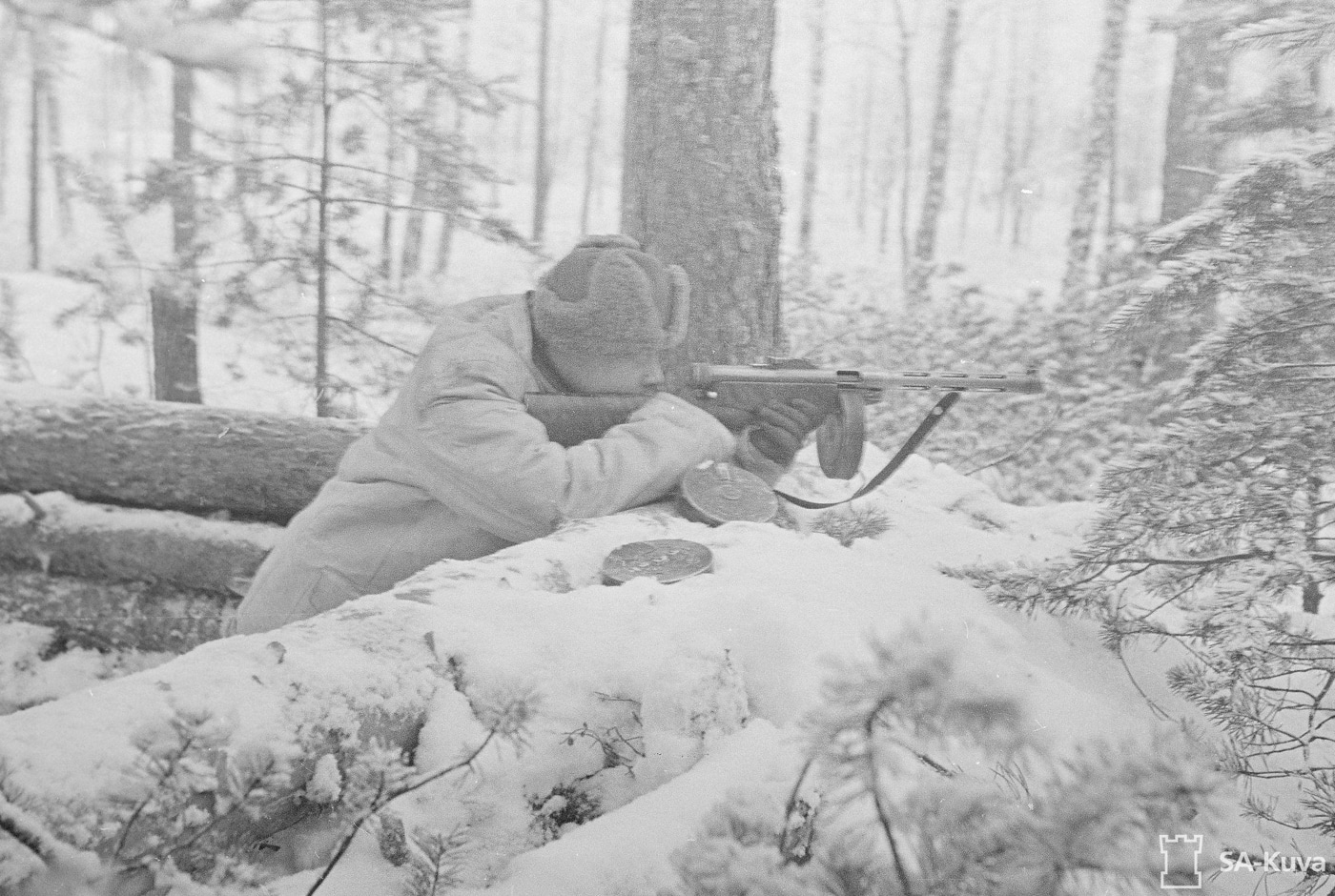
Not surprisingly, the weapon appears in all three versions of the Finnish-made film The Unknown Soldier, which tells the story of Finnish soldiers during the Continuation War, when Finland attempted to regain the land lost in the Winter War.
Conclusion
One of the biggest downsides of the KP/-31 was its high cost to produce, but that resulted in a rugged and reliable weapon. While fewer than 10,000 were reportedly produced, parts kits have shown up in the United States, and “dummy” non-firing models have been offered for sale.
[Be sure to read our article How to Legally Own a Machine Gun for additional information.]
These can still fetch upwards of $1,000 due to their rarity, while a Class III/NFA transferrable C&R KP/-31 was sold by Rock Island Auction (RIA) Company in September 2018, for $19,550 — excluding fees. It was in the mid-range of the pre-auction estimate. Quality and rarity like this will cost you!
Editor’s Note: Please be sure to check out The Armory Life Forum, where you can comment about our daily articles, as well as just talk guns and gear. Click the “Go To Forum Thread” link below to jump in and discuss this article and much more!
Join the Discussion
Continue Reading
Did you enjoy this article?

 78
78






